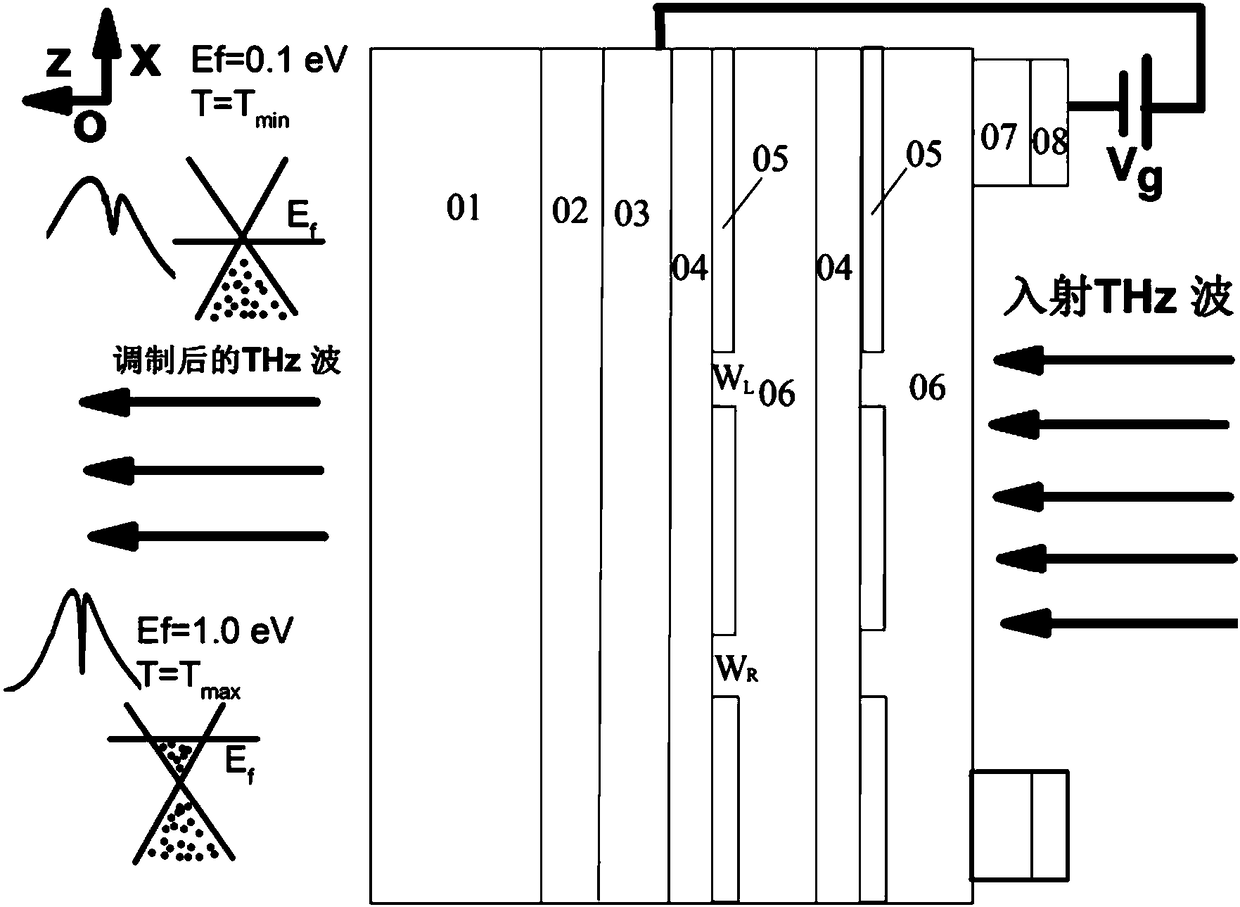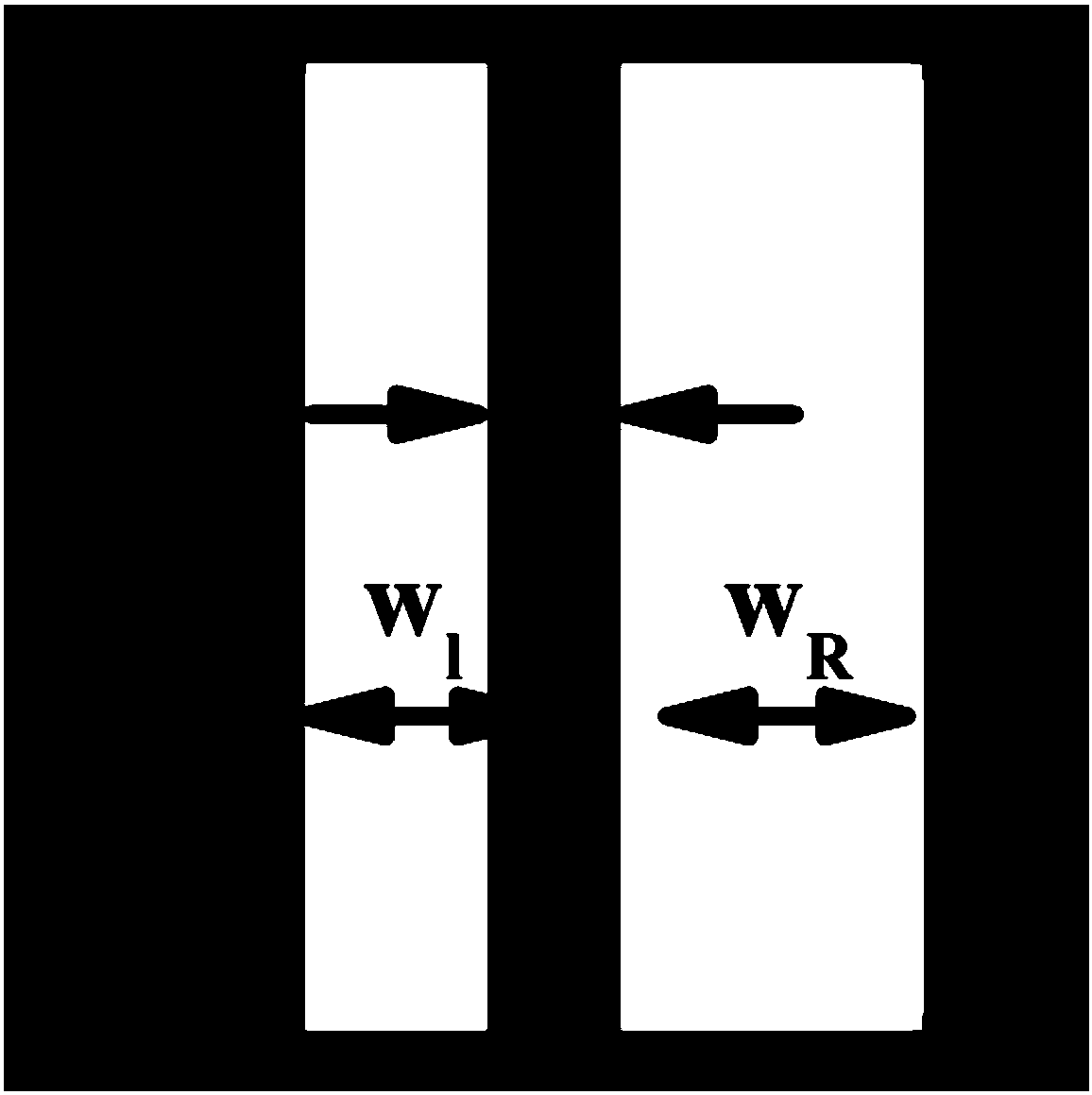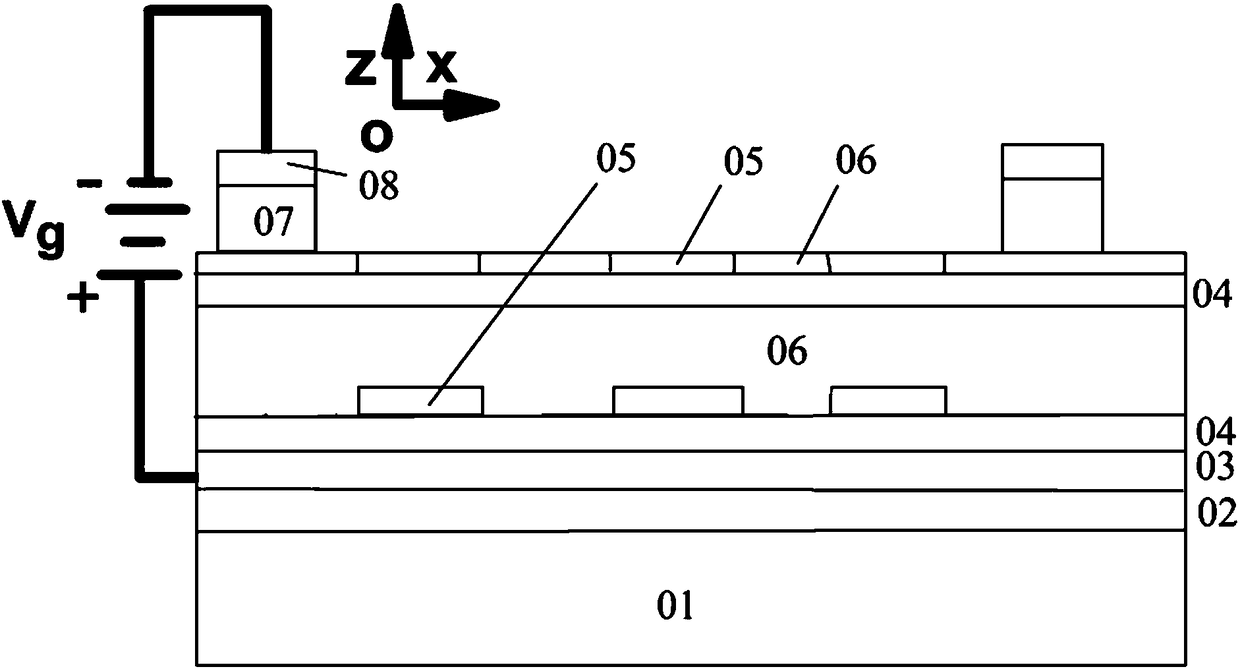Graphene-based complementary type asymmetric n-type structure THz modulator and manufacture method therefor
A graphene-based, complementary technology, applied in the direction of instruments, nonlinear optics, optics, etc., can solve the problems of the decline of the quality factor of the Fano resonance line, the decrease of the Fano resonance amplitude, and the modulation effect is not very obvious, etc., to achieve the quality factor High, large modulation depth, effects with large modulation depth
- Summary
- Abstract
- Description
- Claims
- Application Information
AI Technical Summary
Problems solved by technology
Method used
Image
Examples
Embodiment 1
[0059] The high-quality factor THz modulator of graphene complementary asymmetric Π-type microstructure, its preparation process is made through the following steps:
[0060] (1) Fabrication of polymer flexible substrate layer: ordinary Si sheet is used as a sacrificial layer, and the solution containing plastic polymer flexible substrate layer is sprayed on it by spincoating method, and then dried in an oven for about 30 minutes , the temperature range is 150-200 ° C, and then use a high-temperature furnace in an inert gas (or N 2 ) to 300-400°C (preferably 350°C) in a protective atmosphere to form a thin layer of uniform polymer flexible substrate layer;
[0061] (2) Making an epitaxial layer doped with Si: Form a semiconductor Si epitaxial layer 02 with a thickness of 1-10 μm by epitaxial growth method, and the doping concentration is 3×10 16 cm -3 , the electrical conductivity of the Si layer is 1-10Ω·cm, and the insulation is good, so as to reduce the loss;
[0062] (3...
Embodiment 2
[0071] The preparation method of the THz modulator based on graphene complementary type asymmetric Π type microstructure comprises the following steps:
[0072] (1) Making polymer flexible substrate layer
[0073] Using ordinary Si as a sacrificial layer, spray a solution containing a plastic flexible substrate on the sacrificial layer, dry it at 180°C for 20 minutes, and then heat it to 400°C under the protection of an inert gas for curing to obtain a polymer with a thickness of 1 μm. Flexible substrate layer;
[0074] (2) Fabrication of semiconductor epitaxial layer
[0075] Make the epitaxial layer doped with Si: form a doped Si layer with a thickness of 1 μm by epitaxial growth method, and the doping concentration is 10 15 cm -3 , the conductivity of the Si layer is 1Ω·cm;
[0076] (3) Make semiconductor ITO back electrode: make a semiconductor ITO thin layer as the back electrode by sputtering, with a thickness of about 20nm;
[0077] (4) Making Al 2 o 3 Insulation...
Embodiment 3
[0095] A graphene-based complementary asymmetric Π-structure THz modulator, comprising:
[0096] Polymer flexible substrate layer; semiconductor Si epitaxial layer: a doped semiconductor epitaxial layer formed by epitaxial growth method, with good insulation to achieve the purpose of reducing loss; semiconductor indium tin oxide sputtering layer, that is, the upper electrode semiconductor ITO (Indium Tin Oxide, Sn-doped indium oxide, an n-type semiconductor material with high conductivity) sputtering layer: sputtered on the semiconductor Si epitaxial layer, as the upper electrode of the THz modulator, the thickness is about 20nm; Al 2 o3 Insulation-active region structure composite layer: grown on the semiconductor indium tin oxide sputtering layer, made of at least one Al 2 o 3 Insulation-active region substructure stack composition, the Al 2 o 3 The insulating-active-region substructure includes the underlying Al 2 o 3 insulating layer, and grown on Al 2 o 3 Complemen...
PUM
| Property | Measurement | Unit |
|---|---|---|
| thickness | aaaaa | aaaaa |
| thickness | aaaaa | aaaaa |
| thickness | aaaaa | aaaaa |
Abstract
Description
Claims
Application Information
 Login to View More
Login to View More - R&D
- Intellectual Property
- Life Sciences
- Materials
- Tech Scout
- Unparalleled Data Quality
- Higher Quality Content
- 60% Fewer Hallucinations
Browse by: Latest US Patents, China's latest patents, Technical Efficacy Thesaurus, Application Domain, Technology Topic, Popular Technical Reports.
© 2025 PatSnap. All rights reserved.Legal|Privacy policy|Modern Slavery Act Transparency Statement|Sitemap|About US| Contact US: help@patsnap.com



